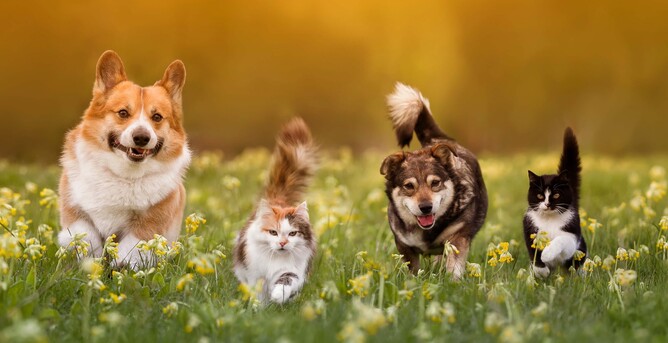Just like us, our pets need good quality nutrition to remain healthy and active. High-quality foods give them the balance of nutrients their bodies need and help them to have healthy skin and coats and a strong immune system.
Conversely, nutrient deficiencies, or excesses, can lead to problems such as allergies, heart disease, kidney disease and other organ dysfunction.
With so many pet food options available - ranging from budget ‘home brand’ options to specialty feeds designed for different breeds, sizes and ages of pet - choosing the best food for your pet can be confusing.
The benefits of high-quality food
While the latter may initially appear to be more expensive, they are potentially more economical in the long term. High-quality foods are more nutritionally dense and contain less ‘fillers,’ so can often be fed in lower quantities to keep your pet satisfied and feeling full. They are also more digestible, meaning less is wasted in faeces in the litter box or on the lawn!
Choosing a well-balanced diet ultimately gives your pet the best chance of remaining healthy for longer, which may reduce your health care costs later in their lives.
It is worth noting that many supermarket brands of food are incredibly high in salt, which is addictive and increases their blood pressure, putting their kidneys at a higher risk of early failure.
Pick what is best for YOUR pet
When choosing a food, make sure you find one that is the right nutritional profile for your pet’s needs. For example, a senior labrador will have completely different nutritional requirements to a chihuahua puppy, or even to a labrador puppy.
Fortunately, high-quality pet food brands provide options that have been formulated and scientifically tested to suit puppies, adult dogs and senior dogs of all sizes.
How much should you feed them?
Once you have chosen a good quality brand of food that is suitable for your pet, make sure you read the feeding instructions on the label, and follow them carefully.
It is important to know how heavy your pet is to ensure you are feeding the correct number of grams per day. With a cat, or a small dog, it may be easiest to weigh yourself first and then again while holding onto your pet. The difference between the two will give you a rough idea of their weight, depending on the accuracy of your bathroom scales! If you have a large breed dog that you are struggling to weigh at home, feel free to bring them into your local clinic to hop onto our scales.
When measuring out the portion size for the first time, use your kitchen scales to ensure it is accurate and then make a note of how much your chosen ‘scoop’ or measure holds so you can continue to feed the correct amount. This helps to prevent underfeeding, which can leave your pet undernourished, or overfeeding, which can result in your pet being overweight.
Be careful with treats
Once you have established how much to feed your pet, remember to be careful with treats, as these are extra calories you are adding to their diet. If you are overly generous, you could unintentionally cause weight problems for them.
While treats are a great motivator when training your pet, see if you can transition them to being rewarded with a pat, a scratch around the ears, and verbal praise, instead.
Ask for advice
Getting pet nutrition right is important, but not always easy.
If you have any questions about what, and how much, to feed your pet, please ask us for advice - our clinic staff will be happy to help you find the best nutrition programme for your pet.
This article was originally published by VetSouth. As a trusted partner of West Coast Vets, we're proud to share their expertise with our community.

